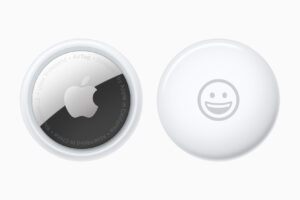Microsoft Edge, the default web browser that comes pre-installed on approximately 1.4 billion Windows PCs, is pretty darn good. Over the last few years Microsoft has invested a lot of time and money in expanding its features to compete with Chrome. So it’s a shame that I have to tell you, once again, that Microsoft is abusing its position as the publisher of Windows to try and force its users onto its first-party browser.
Earlier this week, some Windows users found that every time they opened Chrome, the Windows default app settings window would open too. Some of them reported that the window would open every time they clicked a link in the browser, so long as Chrome was set to the default. The issue seemed to be especially common for Windows Enterprise users. Apparently it was a problem with the KB5025221 Windows update issued in April, which broke Chrome’s one-click option to change the default browser, a feature Google introduced last year. Gizmodo reports that simply changing the name of the Chrome executable was enough to avoid the issue, indicating that Microsoft’s update specifically targeted Chrome’s default button behavior.
But that’s not the end of the story. Just this morning Microsoft announced that a new update to the desktop versions of Outlook and Teams will force links to open in the Edge browser, ignoring the user’s default settings if they’re assigned to another browser. Not only is it a flagrant abuse of Microsoft’s position as the publisher of Windows and its associated tools, it’s blatantly ignoring Windows’ users ability to set custom app associations with files and links.

Making searches from the Windows Start menu will open Bing in Edge, no matter what your default browser. And if it isn’t set to Edge, you’ll get a little banner telling you to change it.
Michael Crider/Foundry
Pushing Edge (and formerly Internet Explorer) on users with these passive-aggressive tactics is nothing new for Microsoft. In fact it tried precisely the same tactic with the default Mail program five years ago. The Settings menu for apps still begs you to try Edge the first time you change the default browser, and making web searches from the Start menu will ignore your default browser setting if it isn’t Edge. Edge still periodically nags you to change your default when you open it, which is particularly cheeky since apparently Microsoft has intentionally hamstrung Chrome’s ability to do exactly the same thing.
But there’s a certain irony in these latest attempts to push Edge on users, just a few weeks after a Microsoft representative said, “We have taken and will continue to take steps to mitigate unrequested modifications to a user’s choices.” It doesn’t help that last week Edge was caught sending user traffic data to Bing — an alleged bug that Microsoft patched quickly, but not quickly enough to give a black eye to the company’s boasts of security and privacy on the browser’s promotional page.
Microsoft, in the wise if uncouth words of my Texan grandpa, “Don’t piss on my boots and tell me it’s raining.” Eight years after its introduction, and despite being installed on over a billion machines, Edge has just 10.95 percent of the desktop browser market — even less than Apple’s Safari as of this month. It’s clear that no amount of manipulative tricks are going to force Windows users off of their preferred browser, so it would be wise to stop trying.
To paraphrase another great Texan philosopher, “You’re not making Edge better, you’re just making Windows worse.”
- SEO Powered Content & PR Distribution. Get Amplified Today.
- PlatoAiStream. Web3 Data Intelligence. Knowledge Amplified. Access Here.
- Minting the Future w Adryenn Ashley. Access Here.
- Source: https://www.pcworld.com/article/1807165/microsoft-is-pushing-edge-with-dirty-tricks-again.html
- 1
- 10
- 50
- a
- ability
- abuse
- after
- again
- ago
- amount
- an
- and
- announced
- Another
- app
- approximately
- apps
- April
- ARE
- as
- assigned
- associated
- Associations
- attempts
- avoid
- banner
- BE
- being
- Better
- Billion
- Bing
- Black
- boasts
- Boots
- browser
- Bug
- but
- button
- caught
- certain
- change
- choices
- Chrome
- clear
- comes
- Common
- company's
- compete
- continue
- custom
- data
- despite
- do
- Edge
- end
- enough
- Enterprise
- especially
- even
- Every
- expanding
- explorer
- eye
- Feature
- Features
- few
- First
- first time
- For
- force
- Formerly
- from
- Get
- give
- going
- great
- has
- Have
- help
- HTML
- HTTPS
- i
- if
- in
- Internet
- introduced
- introduction
- invested
- Is
- issue
- issued
- IT
- ITS
- jpg
- just
- last
- latest
- less
- LINK
- links
- Little
- Long
- lot
- Machines
- Making
- matter
- Microsoft
- money
- Month
- morning
- name
- New
- new update
- no
- not
- nothing
- of
- off
- on
- only
- open
- Option
- Outlook
- over
- particularly
- PCs
- percent
- plato
- plato data intelligence
- platodata
- platogaming
- position
- pretty
- privacy
- Problem
- Program
- promotional
- Publisher
- push
- pushing
- quickly
- reported
- Reports
- representative
- Safari
- same
- Search
- security
- set
- Simply
- since
- So
- some
- specifically
- start
- Steps
- still
- Story
- tactics
- Take
- teams
- tell
- than
- that
- The
- their
- Them
- These
- they
- this
- time
- to
- tools
- traffic
- Update
- User
- users
- versions
- was
- web
- web browser
- week
- weeks
- What
- when
- will
- windows
- Windows users
- with
- words
- worse
- would
- year
- years
- you
- your
- youtube
- zephyrnet











